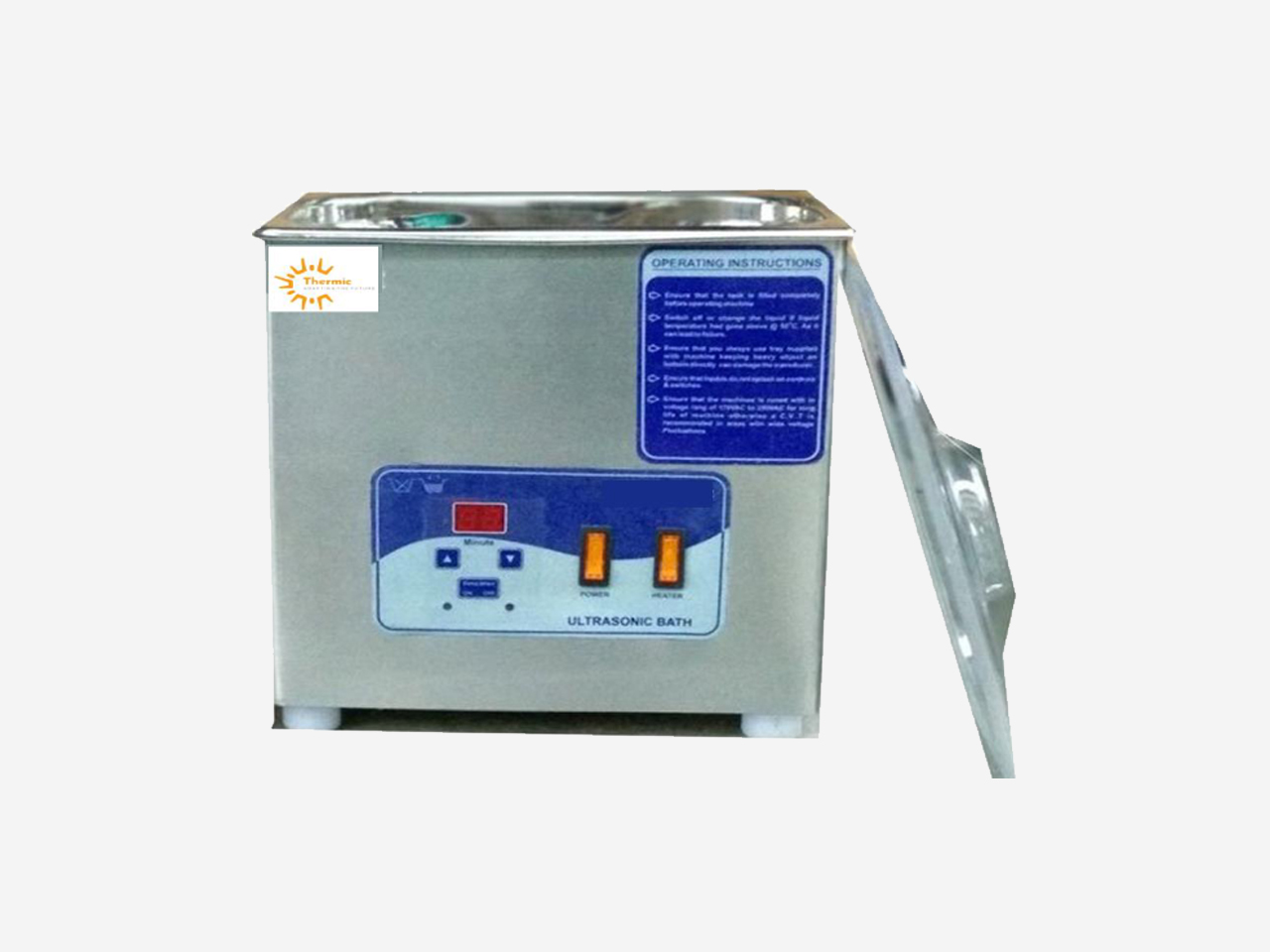THERMIC Laboratory sonicators operate based on the principle of ultrasonics, harnessing the mechanical
vibrations generated by transducers to impart energy to liquid samples. When subjected to ultrasonic
waves, the phenomenon of cavitation occurs, wherein the rapid formation and collapse of microscopic
bubbles release intense localized energy. This cavitation effect results in a range of mechanical and
chemical processes, including the disruption of cellular structures, homogenization of emulsions, and
dispersion of particles.
The versatility of laboratory sonicators renders them indispensable across numerous scientific domains:
- Cell Disruption and Lysis: Sonication is commonly employed in molecular biology and biotechnology for
the disruption of cells, facilitating the release of intracellular contents such as proteins, DNA, and RNA.
- Emulsification and Homogenization: Sonicators are utilized to create stable emulsions by effectively
dispersing immiscible liquids or finely dividing solid particles suspended in a liquid medium.
- Particle Size Reduction: In materials science and nanotechnology, sonication serves to reduce particle
size and improve dispersion, crucial for the synthesis and processing of nanoparticles and colloidal
suspensions.
- Degassing and Deaeration: Sonication aids in the removal of dissolved gases from liquids, essential in
applications such as degassing solvents and preparing bubble-free solutions for analytical techniques
- Sample Preparation: From sample homogenization in microbiology to the preparation of nanoparticle
dispersions in pharmaceutical research, sonication plays a pivotal role in sample preparation protocols
across diverse scientific disciplines.
Ultrasonic Cleaner is essential tool for Scientific & Pharma Labs. There are many uses of ultrasonic cleaner
in QC , R&D & Analytical Labs such as,
- Dissolve, disperse, and emulsify samples
- Sonochemestry i.e. degassing the solution
- Cleaning the glass ware , Lab Instruments
Effective utilization of laboratory sonicators requires careful consideration of several factors:
- Frequency and Power: The choice of sonication frequency and power levels depends on the specific
application and sample characteristics, necessitating optimization for desired outcomes while minimizing
potential sample degradation.
- Sample Integrity: Vigilance is crucial to prevent excessive heating and mechanical damage to sensitive
samples, necessitating the implementation of appropriate cooling methods and sonication durations.
- Probe Selection: The selection of sonication probes, including their size and material composition,
influences sonication efficiency and compatibility with different sample types.
- Experimental Setup: Proper calibration and setup of sonication equipment, including vessel size and
positioning, are essential to ensure reproducibility and consistency of results
- Capacity: 10/20/30 Litres (+ 1L)
- Dimensions (in mm):
- Inner: 305x230x150mm/ 450x 305x150mm/ 380x380x200 mm (+/- 20mm)
- Electric Supply :
230 V AC 1 Phase OR 440 V , A.C, 50 Hz 3 phase.
- Ultrasonic Power :
250/400/500 Watt
- Temp:_Upto 60 Deg
C
- Ultrasonic
Frequency : 33 KHz OR 40 K Hz , +/- 3 KHz
- Ultrasonic
Generator : Micro Controller base Digital Timer .
- With latest MOSFET
base technology
- With Auto
Degassing facility.
- Automatic
frequency tuning for maximum output
- Modular generator
for easier modification/servicing.
- Timer : Two Digit
LED display 0
- 90 minutes Timer
with settable & On / Off keys.
- Heater : S.S
sheathed cartridge type immersion heater Heater can easily be replaced
- Temperature
Control : Maximum allowable Temp is 60°C
- Digital Temp/
Controller with two Digit LED Display with settable & On / Off
- Transducers : PZT
Sandwich type, bonded on the base of S.S Tank, Crystal used of PZT4, of
vmatrock Morgon Make. High temp. & good quality wires for connection
& epoxy for bonding of transducers are used.
- Tank MOQ : S.S 304
grade, 1.6mm thick & buffed form inside
- Tank Capacity : 28
Liters
- Inlet &
Drain Valve : 1/2" Ball Valve is provided for cleaning for the Both
tank
- Over Flow Tap : ½
- Tap Enclosure MOQ
: S.S 304 grade.
- Float Switch
Protection : Ultrasonic Cleaner will start when tank solution will fill
up to the marking level. This is for protection of crystals
- Micro Controller
base Digital Timer .
- With latest MOSFET
base technology.
- Automatic
frequency tuning for maximum output
- Low transducer
losses permit maximum cleaning action.
- Modular generator
for easier modification/servicing.
- Rugged and easy to
clean stainless steel housing.
- Extensively
protected electronics circuits for longer and safe operation.
- Frequency 40 KHz +
3 KHz fixed frequency
- Supply voltage of
230 V AC 1 Phase OR 440 V AC 3 Phase
- Inbuilt Digital
Timer & Digital Temp. Controller Up to 60 Deg . C
- Single Stage :
Only One Ultrasonic Chamber
Float Switch protection : Ultrasonic Cleaner will start when
tank solution will fill up to the marking level. This is for
protection of crystals
In conclusion, laboratory sonicators represent indispensable tools for a wide array of scientific
applications, offering precise control over sample preparation and manipulation through the
harnessing of ultrasonic energy. By understanding the fundamental principles and optimizing
experimental parameters, researchers can leverage the capabilities of sonication to advance their
scientific endeavors across diverse disciplines.

